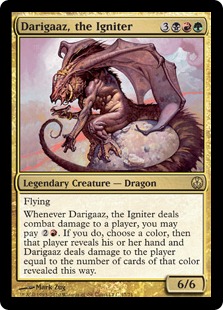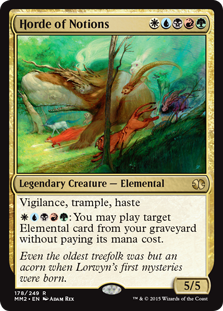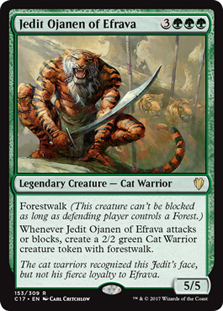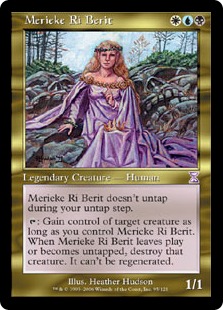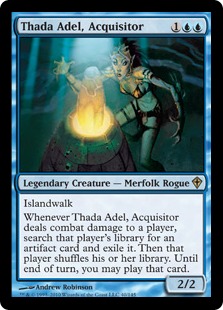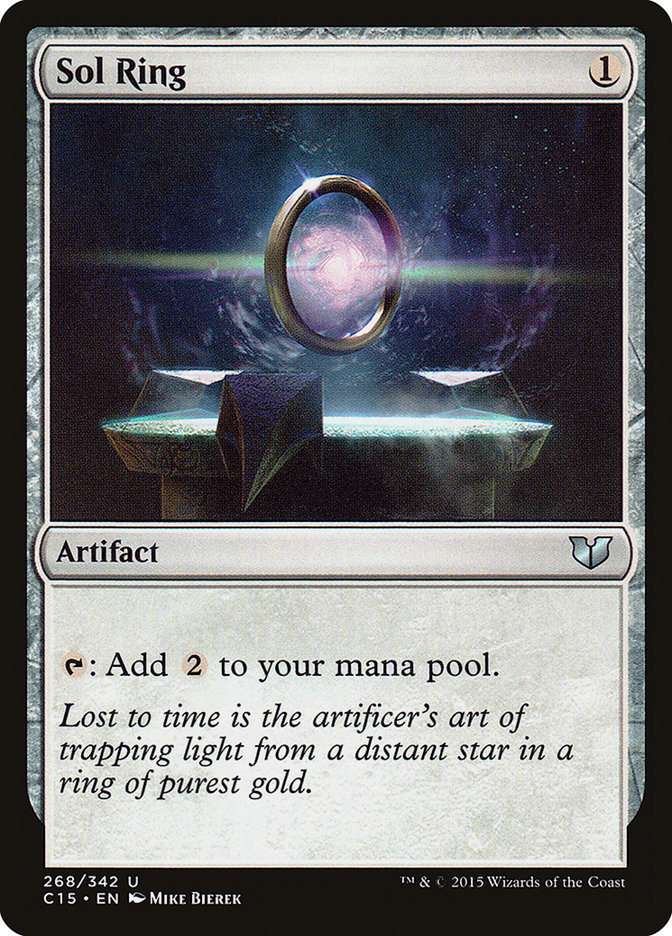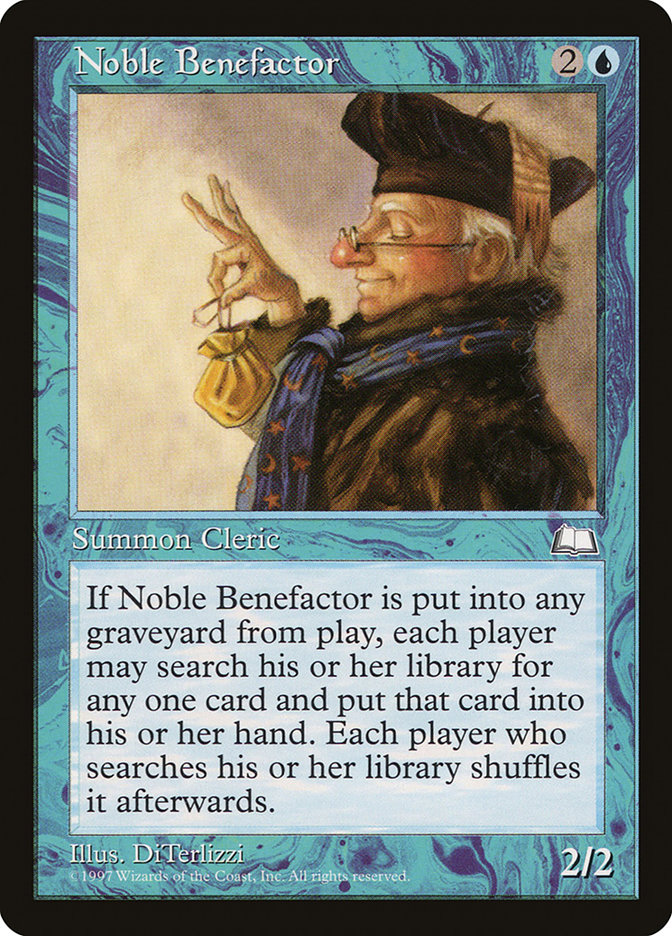Building on a budget can be a struggle. Shiny new toys like Mana Crypt command a high price and even Sensei’s Divining Top costs as much two people going out to eat. What is a fiscally challenged Commander player to do when their disposable income is limited? Tighten up that metaphorical belt and dive into the budget world!
Building on a budget is not as difficult as many believe, even if it means setting aside some of the more popular cards. Green is very strong in a budget environment because much of its ramp capabilities are interchangeable. I’m going to step away from green for this budget discussion, though, to avoid using it as a crutch.
There are two main paths for getting the Commander fix without spending much: Pauper and setting a dollar limit. Pauper is a format where you can use only commons for your deck. Pauper Commander allows players to select an uncommon creature to lead their commons into battle. There are a few rules tweaks, such as starting life and the commander damage rule; but this is the same game except that you cannot use silver, gold, and orange or purple rarities. There was even a Commander VS. episode about it.
The other budget deckbuilding method is assigning a dollar amount and keeping the costs of the deck under that threshold. This lets you make more decisions about your deck and can be adjusted when you have more or less to spend on Magic. While I have a Pauper Commander deck (Kathari Remnant), today I’ll be discussing the “limited budget” option.
Setting a Budget
Setting a budget is the first step. Picking your commander is not the first step.You need to know what constraints to work under before beginning to plan your deck. The most common budget caps I have seen are $50, $75, $100, and $200 for a deck. This number almost always excludes basic lands, as we tend to have piles of them to donate to budget-conscious players and many stores can donate basic lands as well. An interesting way to build a deck is to start the deck at a price you can afford, then work it up on a month by month basis as you can add cards. If you only can devote five dollars, that may mean saving up for a few months if you really want a Sensei’s Divining Top or finding an alternative like Crystal Ball and getting a two- or three-dollar card for the month.
When you are building, you should always keep the budget in mind. A $50 deck needs the average price of every card to be $0.50 or less. Dropping in a five-dollar card can work, but you will need a lot of cards that are under a quarter to make up the difference.
Picking a Commander
Once your budget is worked out, it is time to pick a commander. You can include your commander in the budget (particularly if you are acquiring the card when making most or all of the deck purchase) or run whatever commander you choose and use the budget for the deck. Both choices have merit, but if you are playing a commander like Kalitas, Traitor of Ghet or Angus Mackenzie, people may question your claims for a budget deck. Fear not! You can play and demonstrate your deck or play a budget-friendly commander. There are plenty of potential commanders that can cut costs on your deck. Here are a handful:
I chose Lyzolda, the Blood Witch for this project. That isn’t entirely true; a few months ago I did a budget deck challenge and was assigned Lyzolda. I really liked the deck, so I kept it. Lyzolda is cheap at $0.59 for a Near-Mint copy, has a low mana cost, and functions as a draw engine. I love card drawing engines as commanders. Proving the point are Jori En, Ruin Diver; The Gitrog Monster; Damia, Sage of Stone; and Dragonlord Ojutai, all part of my herd. In addition to drawing cards, Lyzolda, the Blood Witch can also deal damage outside of combat. If an opponent gets low on life, she can take out that player before they stabilize.
Lyzolda is not all upside; she demands a bit of work for her effects. The first requirement is mana: two mana isn’t a lot to spare, but sacrificing multiple creatures a turn gets expensive quickly. She is also picky about what creature she wants to sacrifice; a black creature draws a card and a red creature deals two damage. A red and black creature triggers both effects, but a colorless creature doesn’t trigger either effect.
Her effect, assuming it’s built around, will put a lot of creatures or at least tokens into your deck. This isn’t an issue, but some cards will end up on the cutting room floor that normally wouldn’t if we had a limitless or larger budget, like Bloodghast, which is over $20 right now.
Deciding What Is Worth the Cost
Some cards carry a higher price for a reason. Mana Crypt may be cheaper now with Eternal Masters but the card is still not a “budget” card. Sol Ring is only about $2.50 and is almost always as good, and it doesn’t randomly Lightning Bolt you during your upkeep. However, even Sol Ring needs some consideration in a budget deck; that $2.50 is five cards averaging $0.50. To balance out adding a Sol Ring, nine cards in the deck need to average only $0.25, so that when you add in Sol Ring, those ten cards come out under $5.00.
There are loads of great cards for Commander that only cost a few cents, so adding Sol Ring isn’t a problem. True, but what about adding in Command Tower ,which is $1.99 for the Commander 2015 printing or $2.49 for either Commander 2011 or Commander 2013? I’m sure you can make it work for about five dollars’ worth of cards. But each one of them means about nine cards that lost half of their expected value. Basic lands are free for almost all Magic players, but basic lands only go so far toward negating card costs.
I am not saying to skip out on good cards like Sol Ring and Command Tower. What I am advocating is that you take some time to make sure the card you are adding is worth the cost. Six cards that are all two dollars would be pretty easy to drop into most Commander decks, and many players have some piles of cards that are in the bulk price range. But when you are building on a budget and need a card, that last two dollars might mean finishing the deck or needing to run closer to 45-48 lands because you ran out of money for the deck.
Card Prices Shift
Terminate was dirt-cheap for a while. I picked up a handful of copies and never needed more. I have them in boxes and don’t care. Well, Modern made that particular piece of removal jump up to about three dollars. That shift can bump a deck out of budget when tournaments shift some prices. It isn’t something to panic about, but if you are purchasing cards after a tournament, you want to make sure that nothing spikes in price and catches you off-guard.
When your budget starts to increase, the shifts matter a lot less. Only when something on the banlist changes do prices really impact a $200 Commander deck. And once the deck is built, you are under no obligation to keep the deck constantly under a set number.
However, this also can work in your favor. Bannings will often lower a card’s price. The real gems for saving money are sales and non-English cards. For my deck, I kept the pricing to Near-Mint condition, but if you are looking to cut costs, getting Slightly or Moderately Played can save you several dollars at a time. Many non-English carsd are more affordable than their English counterparts. The age of smartphones and WiFi has made non-English cards (assuming an English speaker/reader) easier to use. As long as you know the name, you can search forthe card in a database or even Google and get the Oracle text* in a click or two. Easy peasy, and you get to save some money on your deck.
*Always get the Oracle text. Do not assume that you know the card. Take the couple of seconds and make sure you read the card. Even judges use Oracle text. Please do this. It prevents many potential problems and accidental cheating.
Lyzolda, the Blood Witch
This deck squeaked in right under the budget at a total of $49.53 in Near-Mint condition with basic lands excluded. Lyzolda, the Blood Witch wants to sacrifice creatures for fun and profit. The deck ideally runs like the little synergy engine that could, looping cards like Siege-Gang Commander and Mogg War Marshal in and out of the graveyard to deal damage and make tokens, or the same with some black creatures like Phyrexian Rager or Marsh Flitter to draw lots of cards.
The critical pieces are the token producers, the recursion pieces, and mana. There are a bunch of options, so how strongly you season your deck with them is up to your taste. But the token producers leave behind creatures to attack, block, and get more value with Lyzolda.
The recursion is important to keep your gameplan moving forward. Nim Deathmantle is a $1.99 card that is worth a five-dollar card in this deck. Woebearer is a neat budget option, and Grim Harvest and Disturbed Burial ensure you can get all your critters back.
Mana is listed as a critical piece because of how costly looping cheap critters can get. Mogg War Marshal is two mana, sacrificing it to Lyzolda to boop an opponent is another two mana, and casting and buying back Disturbed Burial is five more mana. Nine mana in one turn to make a couple of 1/1 Goblin tokens and deal some damage is hefty. Siege Gang-Commander is a better option, but it costs five mana alone. Mana rocks and hitting land drops are important.
Nim Deathmantle: $1.99
Mogg War Marshal: $0.49
Beating your opponents with a deck worth only three of their cards: priceless.
The Decklist
Creatures (34)
- 1 Withered Wretch
- 1 Nezumi Graverobber
- 1 Siege-Gang Commander
- 1 Bone Shredder
- 1 Woebearer
- 1 Priest of Gix
- 1 Phyrexian Rager
- 1 Skarrgan Firebird
- 1 Rakdos Ickspitter
- 1 Deepfire Elemental
- 1 Mogg War Marshal
- 1 Molten Firebird
- 1 Ingot Chewer
- 1 Marsh Flitter
- 1 Ashenmoor Gouger
- 1 Manaforge Cinder
- 1 Murderous Redcap
- 1 Sootstoke Kindler
- 1 Hissing Iguanar
- 1 Shambling Remains
- 1 Deathbringer Thoctar
- 1 Butcher of Malakir
- 1 Reassembling Skeleton
- 1 Priest of Urabrask
- 1 Reaper from the Abyss
- 1 Wakedancer
- 1 Sepulchral Primordial
- 1 Gray Merchant of Asphodel
- 1 Ophiomancer
- 1 Archetype of Finality
- 1 Bloodsoaked Champion
- 1 Merciless Executioner
- 1 Deathbringer Regent
- 1 Zulaport Cutthroat
Lands (37)
Spells (28)
- 1 Sol Ring
- 1 Diabolic Tutor
- 1 Darksteel Ingot
- 1 Skullclamp
- 1 Mind Stone
- 1 Disturbed Burial
- 1 Worn Powerstone
- 1 Rakdos Signet
- 1 Coldsteel Heart
- 1 Grim Harvest
- 1 Prismatic Lens
- 1 Sudden Spoiling
- 1 Armillary Sphere
- 1 Veinfire Borderpost
- 1 Everflowing Chalice
- 1 Furnace Celebration
- 1 Nihil Spellbomb
- 1 Nim Deathmantle
- 1 Syphon Flesh
- 1 Vandalblast
- 1 Whip of Erebos
- 1 Gild
- 1 Reign of the Pit
- 1 Commander's Sphere
- 1 Crux of Fate
- 1 Hedron Archive
- 1 Rite of the Raging Storm
- 1 Seer's Lantern

At one point the deck had Ashnod’s Altar to loop Priest of Gix or Priest of Urabrask with Nim Deathmantle to get infinite mana. With Lyzolda, that lets you draw the whole deck. With infinite mana and whole your deck in hand, winning is easy. But my LGS got wise to that plan and the deck didn’t protect itself well. So I turned it into the synergy build that it is now.
If I added more money to the deck, I would add some two-color lands like Sulfurous Springs and Smoldering Marsh. After fixing the mana, the next step is adding some of the engine cards the deck had to forsake for costs. Bloodghast is still hefty for a $75 or $100 deck, but Nether Traitor is much more affordable with a slightly higher budget. If I had the space and budget, adding Grave Pact and Dictate of Erebos would give the deck a boost for controlling the game.
Wrap-Up
Building on a budget is a great way to step into Commander or get a deck started when funds are tight. Setting a budget is important, as is realizing that key cards are going to cut into the expected average of your deck, so they need to be balanced out by cheaper cards. Keep those ideas in mind and building on a budget is easy-peasy.
Do you have a budget deck? What are the Commander and the budget? Do you stay on a budget in a different way?


